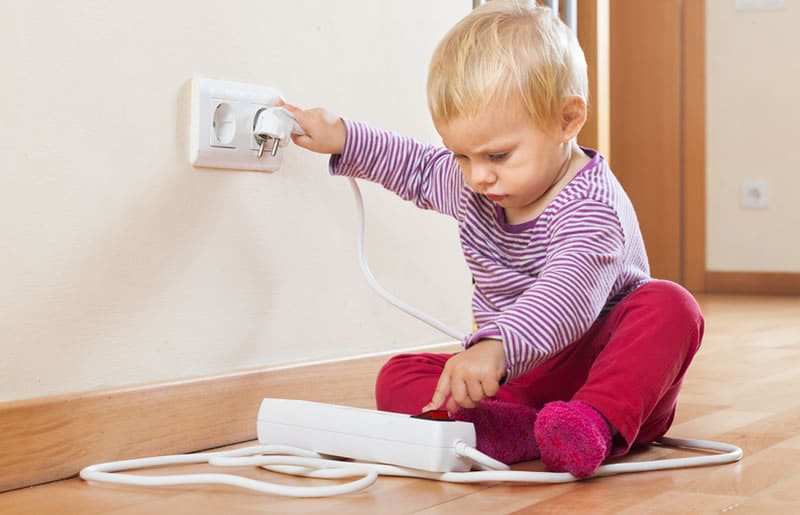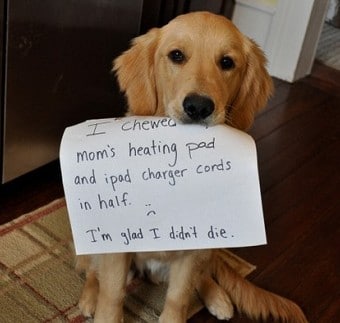
Here at Root Electric, we never stop talking about, and working tirelessly for electrical safety. That’s because as wonderful and necessary as electricity is to our modern way of life, it is still a dangerous thing when handled incorrectly. The statistics tell a sobering story:
- 350,000-400,000 home fires are caused by electrical malfunction or mishandling yearly.
- That adds up to well over $7 billion in property damage,
- Nearly 13,000 injuries and, sadly,
- 2,650 fatalities.
So here are five of the most common home electrical hazards and how you can avoid them and keep your family safe!
1. Extension Cord Overuse
In our extremely wired world, it can be tempting to plug in an extension cord so that you can plug yet another device into just one outlet. But don’t go there; extension cords are only for temporary use and should never be run through walls or ceilings—they can overheat and stoke an electrical fire. Also, if stretched out to reach the appliance you’re trying to power, that leaves you and others vulnerable to tripping and possibly breaking the cord, causing more shock and fire hazards. So if you find that you have an electrical need that you keep reaching for the extension cord to do something you commonly do, the safest thing is to have a new outlet installed where you need it.
2. Water
Kitchens, bathrooms and workshops with sinks are areas in the home where water and electricity come in perilously close proximity to one another. Be sure that these areas are equipped with Ground Fault Circuit Interrupter (GFCI) outlets. These three-pronged outlets have a safety reset button and they shut off the electricity to the outlet if water gets anywhere near it.
But no matter where you are, water and electricity should never come in contact! Never, ever touch an electrical appliance (curling iron, hair dryer, electric razor, TV, radio, space heaters, lamps, toasters, tech gadgets & etc.) if you are wet or touching water whatsoever! And keep all electronics away from sinks, tubs, pools, showers, etc.
3. Kids and Pets

Unfortunately, young kids, pets and the vast majority of electrical outlets have something in common with each other: they’re all low to the ground. And kids and pets are nothing if not curious and more than eager to try sticking all kinds of things into these outlets, which can be deadly dangerous. Make sure to put plastic child-safe covers over all outlets, or have tamper-resistant outlets installed. Tamper resistant outlets are convenient because they have plastic blocks that do not allow things like forks, toys, fingers or claws to enter the outlet. But if you try to plug an actual plug from an electrical device, the tamper-resistant outlet will allow that to plug in. (see the video demo here)
In addition to outlets, don’t allow loose cords to slither around unsecured. Secure cords by taping them in place or using any of the safe cord-securing products on the market. This should keep pets from trying to chew on them, and prevent humans, big or small, from tripping over them. But do not hide them under rugs or other objects because this can cause overheating and fire danger.
4. Using Damaged Wires or Cords
Speaking of cords, if you notice that any of your appliances or electronic devices has a frayed, corroded, melted, cracked, discolored or otherwise disfigured cord or cable, do not use it! Exposed inner wires can cause shocks, burns and fires if plugged in. To prevent cords from deteriorating, always unplug cords by grasping the plastic plug end—do not just yank on the cord itself.
And lest you assume a little electrical tape should fix a damaged cord, please stop. Even this seemingly-simple fix can be dangerous if not done correctly. No matter how small the electrical job in your home seems, always have a qualified residential electrician handle the job for safety’s sake!
5. Dead Batteries in the Smoke Alarms
Did you know that two out of three people who die in home fires did not have a working smoke alarm? This is why it is so important to test your smoke alarms once a month by pressing the “Test” button. Also stay on a consistent schedule to change the batteries in them every six months (we like to change the batteries around the time we switch between standard time and daylight savings time and vice versa). Make sure to have a smoke alarm in every bedroom and at least one on each floor of the home.
One clue that your smoke alarm is running on low batteries is that it toots out a single beep every minute or so (unlike the loud, constant beeping that a smoke alarm should make when it encounters smoke). If your smoke alarms make this intermittent beep, change your batteries right away.
And one last thing: Never DIY an electrical project in your home. Any project that involves electricity in your home should be managed by a professional residential electrician for safety reasons, and to ensure any work done is up to the latest codes and in compliance with your homeowner’s insurance policy. If you have any questions or concerns, don’t hesitate to contact Root Electric at (703) 494-3989.
